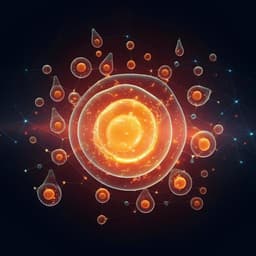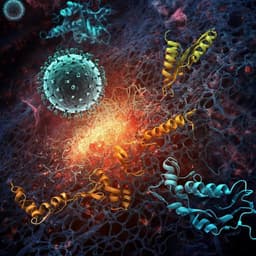
Engineering and Technology
Chondrogenic differentiation of Wharton's Jelly mesenchymal stem cells on silk spidroin-fibroin mix scaffold supplemented with L-ascorbic acid and platelet rich plasma
A. Barlian, H. Judawisastra, et al.
Discover how researchers Anggraini Barlian and colleagues have harnessed the power of silk scaffolds to promote chondrogenic differentiation of human Wharton's Jelly mesenchymal stem cells. Their innovative approach, which utilizes silk fibroin and spidroin, reveals promising results in cell proliferation and chondrogenesis enhancement through the optimal scaffold composition combined with natural supplements like PRP.
~3 min • Beginner • English
Related Publications
Explore these studies to deepen your understanding of the subject.







